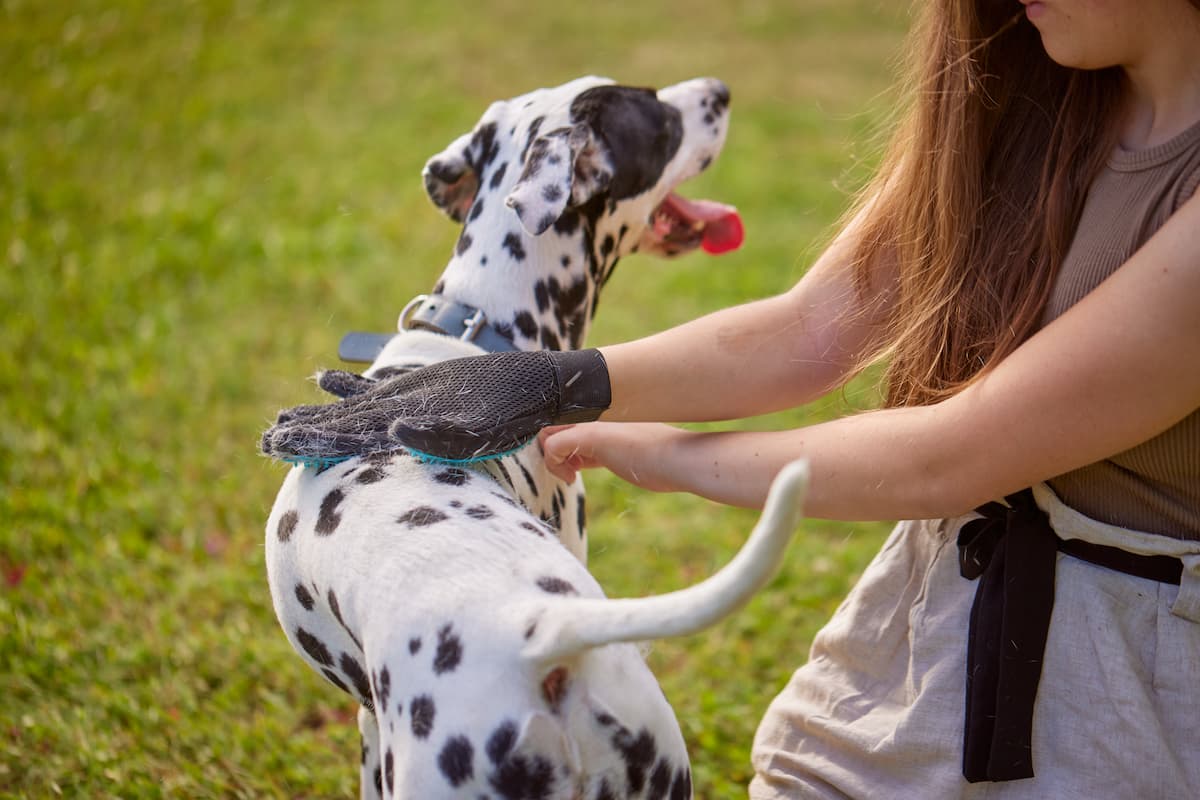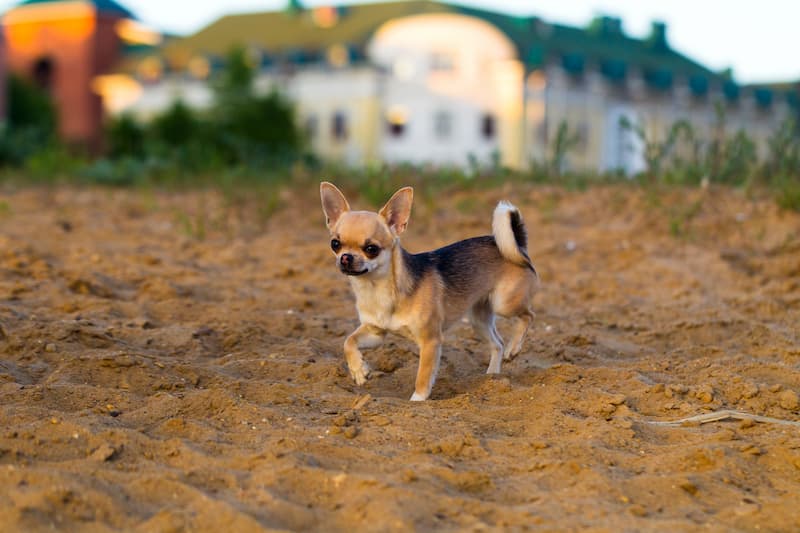Have you ever stopped for a moment to wonder why dogs wag their tails?
I mean, it’s one of those little mysteries of life that always manages to put a smile on your face, right?
You come home after a long, exhausting day, and as soon as you step foot inside, there’s your furry best friend, wagging their tail like there’s no tomorrow.
It’s an instant mood booster!
But have you ever wondered what’s really going on behind that enthusiastic tail wag?
Why do our four-legged companions wag their tails with such joy and excitement?
Read on to find out.
Behind Dogs Wagging Tails
Dogs wagging their tails is a sight that brings joy to our hearts.
But have you ever wondered why they do it?
What is the secret behind this delightful expression?
It turns out that tail wagging is predominantly a form of communication.
Dogs use their tails to express their emotions and intentions to other dogs and even to humans.
It’s a way for them to share information and interact with the world around them.
Tail wagging can also be influenced by a dog’s instincts, genetics, and individual personality.
It’s important to remember that tail wagging should always be interpreted in the context of the dog’s body language and other behaviors.
The Different Types of Tail Wagging
Did you know that dogs have different types of tail wags?
In fact, the direction and speed of the wag, as well as the position of the tail, can provide valuable clues about a dog’s mood and intentions.
Let’s take a closer look at some of the most common tail wagging patterns and what they could mean:
The Happy Wag: This is the classic tail wag that most of us are familiar with.
When a dog is excited or happy, their tail will wag vigorously from side to side in a relaxed manner.
It’s their way of saying, “I’m thrilled to see you!”
The Anxious Wag: On the other hand, if your dog’s tail is wagging low and slowly, it could be a sign of anxiety or uncertainty.
This type of wagging is often accompanied by other body language cues like a lowered head or tucked-in ears.
So, if you notice this kind of tail wag, it may be a good idea to give your pup some space and reassurance.
The Aggressive Wag: If you a dog performing a fast and stiff wag that’s held high, that’s a good sign not to get too close, as it may indicate alertness or aggression.
It’s their way of saying “Back off if you know what’s good for you!”
The Submissive Wag: Dogs also use their tails to communicate submission or deference to other dogs or even humans.
A submissive wag is characterized by a low, slow wag with the tail positioned between the legs.
It’s their way of saying, “I’m not a threat, please don’t harm me.”
These are just a few examples, but the secrets behind tail wagging is far from simple.
Each dog has their own unique way of communicating through their tails, so it’s essential to pay attention to the overall body language and individual cues of your furry companion.
Understanding a Dog’s Body Language
While tail wagging is an important aspect of canine communication, it’s essential to consider the complete picture of a dog’s body language to understand what they’re trying to convey.
A wagging tail alone doesn’t always mean a dog is friendly or approachable.
Here are a few additional cues to look out for:
Ear position: Watch for changes in your dog’s ear position.
If their ears are relaxed and forward, it generally indicates a friendly or alert disposition.
However, pinned-back ears can suggest fear or aggression.
Posture: Notice if your dog’s body is tense or relaxed.
An upright, stiff posture might indicate a dog is on high alert or feeling threatened, while a loose, wiggly body often signifies a playful or calm state.
Facial expressions: A dog’s face can provide valuable information about their mood.
Look for relaxed eyes, an open mouth, and a relaxed or slightly panting tongue, which generally indicate a content and calm state.
Remember, when interpreting a dog’s tail wag, it’s crucial to consider the context and the overall body language of the dog.
The same tail wag can have different interpretations depending on the situation.
Therefore, try to observe their tail wagging alongside other signs to accurately decode their message.
Always approach dogs cautiously, especially when you’re unfamiliar with them.
Discovering Your Pup’s Joy Triggers
So, why do dogs wag their tails in the first place?
Here are some of the key factors that influence tail wagging:
Social Interaction: Dogs are inherently social animals, and their tail wagging behavior often reflects their level of comfort and engagement with others.
When a dog is happy and excited to see their human or canine friends, their tail may wag vigorously from side to side, demonstrating enthusiasm and eagerness.
Conversely, if a dog feels anxious or fearful, they may experience a more subdued and slow tail wag, indicating caution or unease.
Emotional States: Tail wagging is closely linked to a dog’s emotional state, serving as a barometer for their feelings.
For instance, a dog that is relaxed and content may exhibit a gentle, relaxed tail wag that is more fluid and natural.
On the other hand, a dog that feels frustrated or agitated may wag their tail in short, quick bursts or even hold it stiffly in an upright position.
By observing the characteristics of your dog’s tail wagging, you can gain insights into their emotional well-being and tailor your interactions accordingly.
Context and Intent: The context in which a dog’s tail wagging occurs can provide valuable clues about their intentions and desires.
If your pup is wagging their tail while carrying a toy or eagerly waiting for treats, it’s likely a sign of excitement and anticipation.
Tail wagging can also be a form of communication, indicating a dog’s desire to play, seek attention, or even assert dominance.
It’s crucial to pay attention to your dog’s body language and the situation at hand to decipher the specific meaning behind their tail wagging.
How to Read Your Dog’s Emotions Through Their Wagging Tail
By paying attention to the way your furry friend wags their tail, you can gain a deeper understanding of their mood and behavior.
Tail Position
One important aspect to consider is the position of your dog’s tail.
When a dog holds their tail high and rigid, it usually indicates alertness and confidence.
On the other hand, a tucked tail between the legs signals fear or submission.
The wagging motion itself can also provide valuable insights into your dog’s emotional state.
A slow, relaxed wag often indicates happiness and contentment, while a fast and frantic wag may suggest excitement or agitation.
The Direction of the Wag
Believe it or not, the direction in which your furry friend’s tail wags can reveal even more about their emotions.
If the tail wag is biased towards the right side of the dog’s body, it generally signifies positive emotions such as joy and friendliness.
Conversely, a wag towards the left can indicate negative emotions like anxiety or fear.
So, next time your dog greets you with a wagging tail, take a moment to observe the position, speed, and direction to understand the message they are trying to convey.
FAQ
Q: Why do dogs wag their tails?
A: Tail wagging is how our fluffy buddies communicate their emotions.
Just like we use words to talk, dogs have their own language, and wagging their tails is a big part of it.
Q: Why do some dogs wag their tails more than others?
A: Good question!
Depending on the breed and individual personality, some dogs naturally wag their tails more enthusiastically than others.
It can be influenced by genetics, their upbringing, and their overall temperament.
Q: When do dogs usually wag their tails?
A: Dogs wag their tails in various situations.
You’ll often see it when they’re happy and excited, like when you come home after a long day or if they spot their favorite toy.
But beware, not all tail wags mean they’re thrilled!
Q: Really?
What else can tail wagging indicate?
A: Well, sometimes tail wagging can be a sign of fear or anxiety.
If your dog’s tail is tucked between their legs or wagging slowly, it might mean they’re feeling nervous or unsure about something.
Pay attention to other body language cues to understand the full picture.
Q: Can tail wagging also mean aggression?
A: Absolutely!
It’s crucial to recognize that a rapid and stiff tail wag could indicate aggression or potential danger.
It’s one of those moments when you should proceed with caution and be mindful of your dog’s state of mind.
Q: Can dogs control their tail wagging?
A: While dogs can control their tail wagging to some extent, it often happens involuntarily, like a reflex.
Just like when we blush or smile without even thinking about it, dogs wag their tails as an automatic response to their feelings.
Q: Is tail wagging just for human communication?
A: Nope, dogs also wag their tails to communicate with other dogs.
It’s a way of expressing their intentions, emotions, and overall social interactions in their furry community.
Think of it as their secret language!
Q: Are there different types of tail wagging?
A: Oh, absolutely!
Dogs are quite expressive through their tail movements.
A wag that’s high and rapid usually signals excitement.
A slow and relaxed wag typically means your pup is feeling content and comfortable.
And if the tail is positioned low and wagging stiffly, it might indicate some level of unease or threat.
Q: Should we always approach a wagging tail?
A: Not necessarily.
It’s essential to assess the overall body language of a dog before approaching, even if their tail is wagging.
Remember, context is key!
It’s always better to ask the owner if it’s alright to say hello first.
Q: Can we make our dogs wag their tails on command?
A: While it’s challenging to make your dog wag their tail at will, you can certainly create a positive environment where your pup is more likely to wag away.
Shower them with love, attention, and plenty of belly rubs – that’ll get those tails wagging!
Key Takeaways
From ancient wolves to our beloved furry companions, this unique canine trait has stood the test of time, evolving as a means of communication and expression.
Next time you see your four-legged friend excitedly wagging their tail, remember that it’s not just a simple gesture of happiness.
It’s their way of saying, “Hello!”, “I’m here!”, or “I love you!”
Understanding the subtle nuances of tail wagging can help us humans interpret our dogs’ emotions better and strengthen our bond with them.
So, the next time you come home and are greeted by a tail wagging ferociously or your dog wags their tail ever so softly, take a moment to appreciate the extraordinary tale behind this seemingly ordinary gesture.
It’s a wonderful reminder of the deep connection we share with our canine companions and the beautiful language they’ve developed throughout history.













